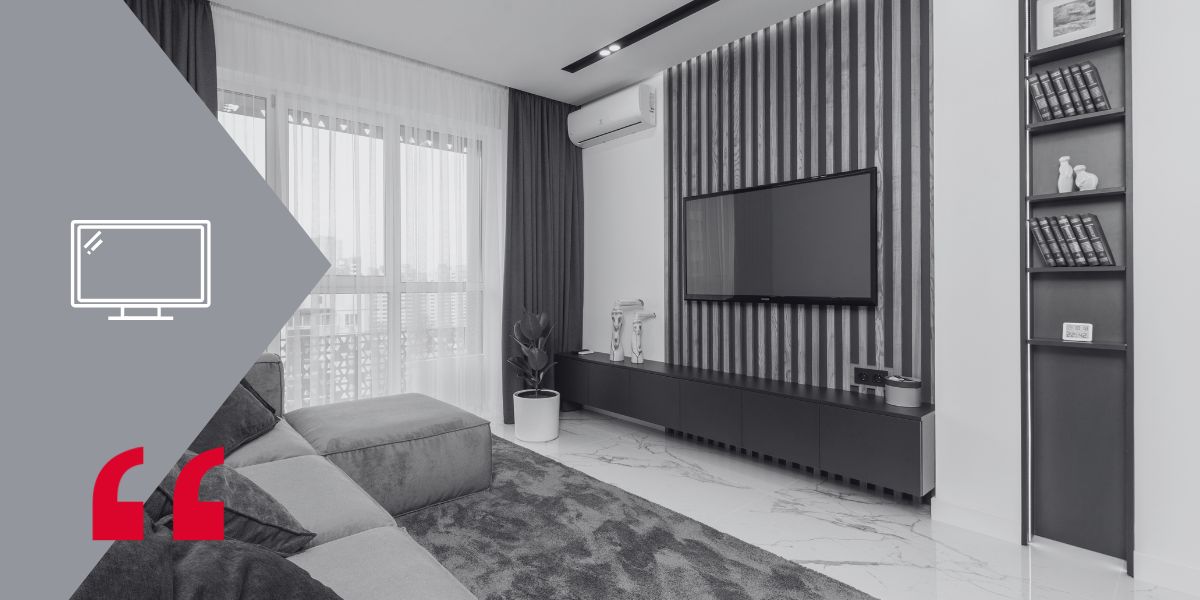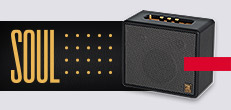When we buy a new TV, one of the most important decisions we must make is how we are going to mount it. Choosing the right mount is crucial to ensure the safety and functionality of our TV. In this article, we will explain how to know which TV mount your TV uses, the types of TV mounts available, and some tips for choosing the best one for your needs.
Types of TV mounts
There are several types of TV mounts, each designed to meet different needs and preferences. Below, we describe the most common types:
Fixed wall mounts
Fixed wall mounts are the most basic. They keep the TV close to the wall in a fixed position. They are ideal for rooms where the viewing angle is constant and the TV does not need to be moved. These TV mounts offer a simple and secure solution for many homes.
Tilt wall mounts
Tilt wall mounts allow you to adjust the tilt of the TV up or down. They are perfect for reducing glare from light and improving the viewing angle, especially if the TV is placed in a high position. These TV mounts are very useful in living rooms or bedrooms where lighting can vary throughout the day.
Full-motion wall mounts
Full-motion wall mounts offer the greatest flexibility, allowing the TV to be moved in multiple directions: forward, backward, and sideways. They are ideal for spaces where the viewing angle needs to be adjusted frequently. These TV mounts are perfect for living rooms where the TV can be viewed from different positions.
Ceiling mounts
Ceiling mounts are less common but useful in certain situations, such as rooms with limited walls or home theater setups. They allow you to hang the TV from the ceiling and adjust its position. These TV mounts can be an excellent solution in offices or commercial spaces where maximizing available space is necessary.
Floor stands
Floor stands are standalone furniture that hold the TV. They usually include additional shelves for other electronic devices. They are a good option for those who do not want to drill into the walls. These TV mounts combine functionality and design, making them ideal for more sophisticated decorations.
How to determine the right mount for your TV
To know which mount your TV uses, you need to consider several factors:
TV size and weight
The size and weight of your TV are crucial for choosing the right mount. Most TV mounts manufacturers indicate the maximum size and weight they can support. Be sure to check these specifications before purchasing a mount.
VESA compatibility
VESA (Video Electronics Standards Association) compatibility is a standard that determines the distance between the mounting holes on the back of the TV. Measure the horizontal and vertical distance between these holes (e.g., 200×200 mm). Make sure the mount you choose is compatible with your TV’s VESA pattern. VESA-compatible TV mounts are easier to install and offer greater security.
Location and installation
Consider the location where you want to install the TV. Think about the ideal height for viewing, the viewing angle, and the possibility of managing cables. Also, check that the wall or surface where the mount will be installed is strong enough. Proper placement of TV mounts can significantly improve your viewing experience.
Additional features
Some TV mounts offer additional features, such as the ability to swivel or tilt the TV. Evaluate whether these features are important to you, especially if you plan to adjust the TV’s position frequently. Additional features can add convenience and flexibility to your entertainment setup.
Tips for a safe installation
The installation of the TV mount should be done carefully to ensure safety. Here are some tips:
- Read the instructions: Follow the instructions from the mount and TV manufacturer for proper installation. TV mounts come with detailed guides to help you through the process.
- Use appropriate tools: Make sure you have the necessary tools, such as a drill, level, and screwdrivers. Using the right tools ensures that the TV mounts are installed securely.
- Check wall strength: Ensure the wall can support the weight of the TV and the mount. Use appropriate anchors if necessary. Wall strength is crucial for the safety of TV mounts.
- Ask for help: Installing a TV can be complicated and heavy. It is advisable to have the help of another person. Installing TV mounts is easier and safer with additional help.
Conclusion
Choosing the right mount for your TV is essential to ensure optimal and safe viewing. Consider the size and weight of your TV, VESA compatibility, installation location, and additional features when making your decision. By following these tips, you can enjoy your TV comfortably and safely. The right TV mounts not only enhance the aesthetics of your home but also ensure a more comfortable and enjoyable viewing experience.





